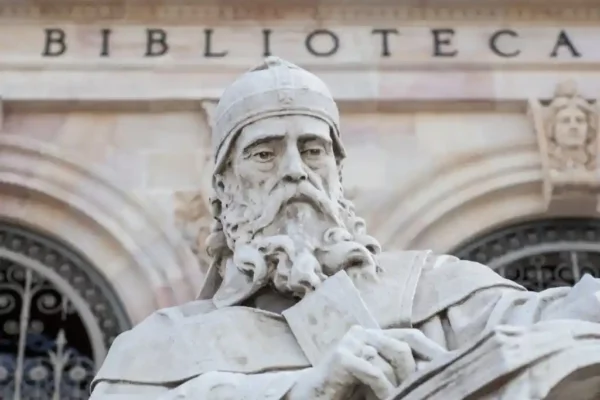The world of writing is both enigmatic and fantastic. It helps us interact with characters that existed thousands of years ago, in far-off lands. The written word lasts. That’s why many transcendental messages have ended up being recorded on a stone, paper, or any surface, in fact.
However, writing’s natural home is in books. And books’ homes are libraries. One of the jewels of humanity as well as a cradle of knowledge was the Great Library of Alexandria. It’s said that it once housed some 900,000 volumes. Its final destruction, in the year 640 CE, left a monumental void. Indeed, we’ll never know what those first papyri in history said.
Speaking of losses, during the Middle Ages, writing was recorded on papyrus or parchment. These materials were extremely expensive, which is why copyists sometimes erased the previous content to reuse them. They were the famous palimpsests. Thanks to ultraviolet rays, some of these texts have been recovered. Included among them are part of The Iliad and Euclid’s Elements. Let’s take a look at some other curious facts about writing.
“Writing is the painting of the voice.”
-Voltaire-
The curious origin of the alphabet
One of the most curious facts about the world of writing is connected with the origin of the alphabet, which is closely related to the origin of monotheism. It happened in Egypt when Pharaoh Amenhotep IV, son of Amenhotep III, ascended the throne. This president produced a real revolution in his culture. He declared that there was only one god, the Sun, called Aton in Egypt.
Many of the ideograms, or graphic signs of writing, included images that represented the gods. The pharaoh ordered all those figures to be erased and only allowed 22 of them to be preserved. These correspond to the consonants we have today. The ruler also began to call himself Akhenaten. His original name was the same as his father’s and was associated with the god, Amun, but he wanted to be associated with Aten.
According to Gerard Pommier, a famous French psychoanalyst, the story of Akhenaten is rather similar to that of Oedipus, a character in the Greek drama Oedipus Rex. Pommier claimed that Akhenaten defied his father when he refused to marry his sister and decided to marry his cousin, Nefertiti. However, since she bore him no children, he later married his own mother to produce an heir. The son was called Tutankhamun (again Amun) and he disowned his father.
According to Pommier, after marrying his mother, Akhenaten had a monotheistic outburst and wished to erase the name of his father (Amenhotep) from the face of the earth, to hide his own transgression.

Punctuation marks
Punctuation marks are key elements in writing. We’re familiar with them today, but they haven’t always been there. In fact, formerly, everything was written without spaces between words and without punctuation marks. There were also no uppercase and lowercase letters, so ‘textlookedsomethinglikethis’. Of course, this style gave rise to a certain amount of confusion, requiring greater effort on the part of the readers.
About three centuries before our era, the librarian of the famous Library of Alexandria was Aristophanes, the author of several Greek comedies. His intention was to make printed texts a little more expressive. Thus, he proposed putting a dot above, in the middle, or below each line to distinguish the tone in which it should be read: high, medium, or low.
However, his contemporaries weren’t keen on his proposal. After all, in those days it was inconceivable that someone could understand a text in a single reading. It took almost ten centuries until Isidore of Seville eventually took up Aristophanes’ idea and give it shape. On this occasion, it was considered a valid contribution and gave rise to the development of punctuation marks.
The post Some Curious Facts About Writing appeared first on Exploring your mind.



















Comments